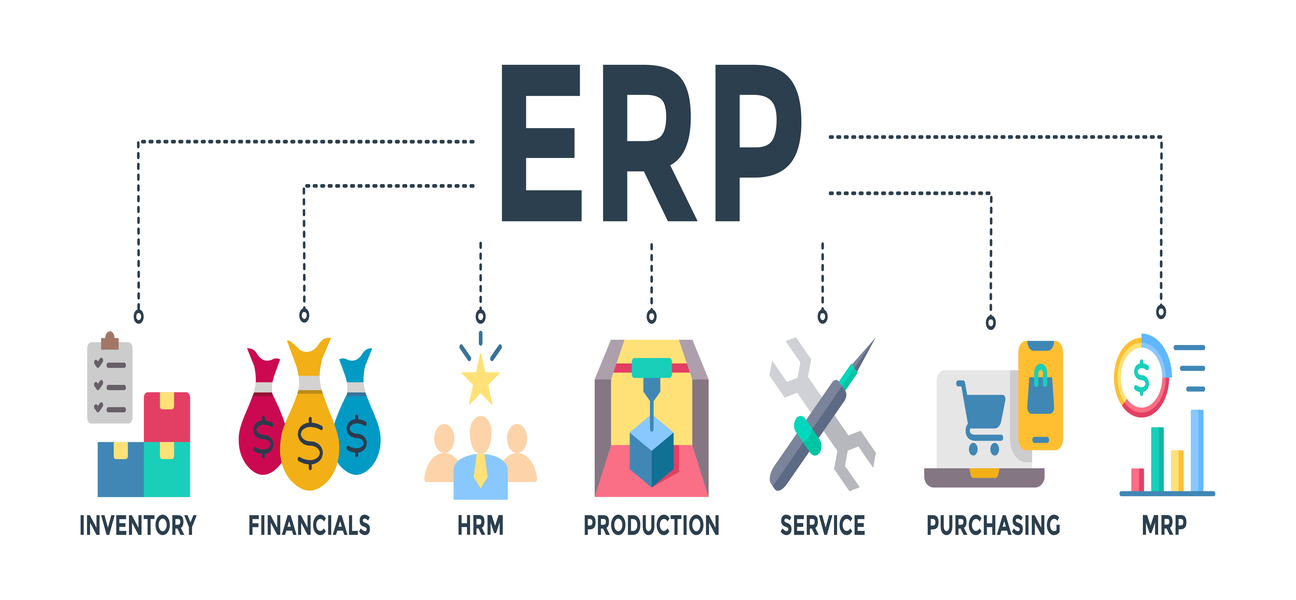Search by Categories
Blog

In today’s fast-paced and highly competitive business environment, organizations are constantly seeking ways to streamline operations, improve efficiency, and make data-driven decisions. One of the most powerful tools available to achieve these goals is Enterprise Resource Planning (ERP). But what exactly is ERP, and how can it benefit your business? This comprehensive guide will explore the definition, components, benefits, and implementation of ERP softwares.
What is ERP?
ERP stands for Enterprise Resource Planning. It is a type of software platform that integrates and manages core business processes in real-time. These processes often include finance, human resources, supply chain, manufacturing, procurement, sales, customer relationship management (CRM), and more. By consolidating data and workflows into a single system, ERP provides a unified view of operations, enabling businesses to make informed decisions and improve efficiency.
ERP systems are designed to automate and standardize processes across departments, eliminating data silos and reducing manual effort. They are used by organizations of all sizes and across various industries, from small businesses to large enterprises.
Key Components of an ERP System:
An ERP system is typically composed of several modules each tailored to a specific business function. Here are some of the most common components:
1. Finance and Accounting: Manages financial transactions, budgeting, invoicing, and reporting.
2. Human Resources (HR): Handles employee data, payroll, recruitment, and performance management.
3. Supply Chain Management (SCM): Tracks inventory, orders, and logistics to optimize the supply chain.
4. Manufacturing: Oversees production planning, scheduling, and quality control.
5. Procurement: Manages purchasing, vendor relationships, and contract negotiations.
6. Sales and CRM: Tracks customer interactions, sales pipelines, and marketing campaigns.
7. Project Management: Facilitates planning, resource allocation, and progress tracking for projects.
8. Reporting and Analytics: Provides real-time insights and customizable reports for decision-making.
These modules can be customized to meet the unique needs of an organization, ensuring that the ERP system aligns with its goals and workflows.
Benefits of ERP Systems:
Implementing an ERP system can transform the way a business operates. Here are some of the key benefits:
1. By automating repetitive tasks and streamlining processes, ERP systems reduce manual effort and save time.
2. A centralized database eliminates data duplication and ensures consistency across departments.
3. Real-time access to accurate data enables leaders to make informed, data-driven decisions.
4. ERP systems help identify inefficiencies, reduce waste, and optimize resource allocation.
5. As businesses grow, ERP systems can be scaled to accommodate new processes, users, and locations.
6. With a unified platform, teams can easily share information and collaborate across departments.
7. ERP systems often include features to help businesses comply with industry regulations and standards.
Types of ERP Systems:
ERP systems come in different forms to suit the needs of various organizations. The main types include:
1. On-Premise ERP: Installed locally on a company’s servers and managed by its IT team. This option offers full control but requires significant upfront investment and maintenance.
2. Cloud-Based ERP: Hosted on the vendor’s servers and accessed via the internet. Cloud ERP is scalable, cost-effective, and requires minimal IT infrastructure.
3. Hybrid ERP: Combines on-premise and cloud-based solutions, offering flexibility for businesses with specific needs.
4. Industry-Specific ERP: Tailored to the unique requirements of specific industries, such as healthcare, retail, or manufacturing.
Challenges of Implementing ERP:
While ERP systems offer numerous benefits, their implementation can be complex and challenging. Some common hurdles include:
1. High Costs: ERP systems can be expensive to purchase, implement, and maintain.
2. Long Implementation Time: Deploying an ERP system can take months or even years, depending on the size of the organization.
3. Resistance to Change: Employees may resist adopting new processes and technologies.
4. Data Migration: Transferring existing data to the new system can be time-consuming and error-prone.
5. Customization Challenges: Over-customization can lead to increased costs and complexity.
To overcome these challenges, businesses should carefully plan their ERP implementation, involve key stakeholders, and provide adequate training to employees.
How to Choose the Right ERP System:
Selecting the right ERP system is critical to achieving your business goals. Here are some factors to consider:
1. Identify the specific processes and functions you want to improve.
2. Choose a system that can grow with your business.
3. Ensure the system is user-friendly and intuitive for your team.
4. Look for a system that can integrate with your existing tools and software.
5. Research the vendor’s track record, customer reviews, and support services.
6. Consider both upfront and ongoing costs, including licensing, implementation, and maintenance.
The Future of ERP:
As technology continues to evolve, ERP systems are becoming more advanced and accessible. Emerging trends include:
1. AI-powered ERP systems can automate tasks, predict trends, and provide actionable insights.
2. IoT integration enables real-time monitoring of equipment and assets.
3. Mobile-friendly ERP systems allow users to access data and perform tasks on the go.
4. Blockchain technology can enhance data security and transparency in ERP systems.
Conclusion:
ERP systems are a cornerstone of modern business operations, offering a centralized platform to manage and optimize processes. By improving efficiency, enhancing collaboration, and providing real-time insights, ERP systems empower organizations to stay competitive in a rapidly changing world. However, successful implementation requires careful planning, stakeholder involvement, and ongoing support.
Whether you’re a small business or a large enterprise, investing in the right ERP system can unlock new levels of productivity and growth. As technology continues to advance, the future of ERP promises even greater innovation and opportunities for businesses worldwide.


